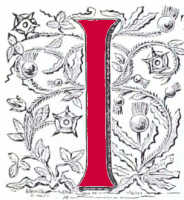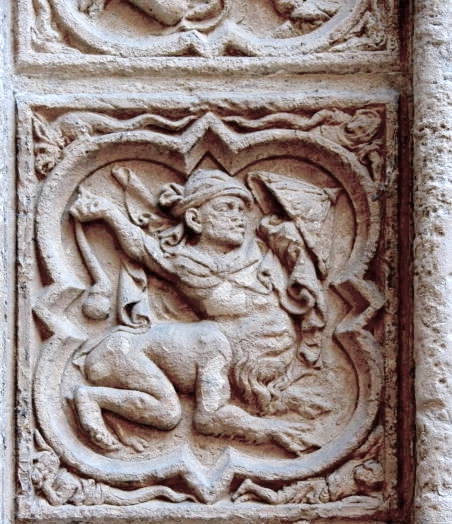

n an earlier collaboration, Cynthia Gamble and Matthieu Pinette brought out a study of Ruskin entitled L’Œil de Ruskin. L’exemple de la Bourgogne (Presses du réel, 2011). Their new book, Ruskin, Proust et la Normandie, the initial research for which was undertaken by Cynthia Gamble with the co-authors then working that material into the overall synthesis we have, shows two major points of focus. Firstly, Ruskin’s keen interest in the heritage of Northern France and in particular his many trips to Normandy between 1835 and 1880 to study its medieval architecture; and secondly, Marcel Proust’s deep engagement with Ruskin’s works, his own visits to Normandy (in the 1880s and later, in particular in the years 1907-1914) and preparatory work he undertook there for A la recherche du temps perdu. Ruskin, Proust et la Normandie explores numerous trails of influence that guided Ruskin and Proust. These include Ruskin in search of the painter Turner, whose Rivers of France (1837) was a source of deep inspiration for him; Proust as guided by his contemporary, the French medievalist Emile Mâle; and, pivotally, Proust in search of Ruskin. ‘J’admets que Ruskin m’ait un peu intoxiqué’ [‘I admit that I was a bit intoxicated by Ruskin’], he confessed to Fernand Gregh in July 1905 (27). Ruskin, Proust et la Normandie also shows how, like Ruskin before him, Proust was keenly interested in connections between nature and the built environment, between botanical forms and the sculptor’s work on stone.

Coustances Cathedral, Normandy.
Gamble and Pinette evoke very well the expressions of intense delight on Ruskin’s part and also his bursts of indignation and outrage in his often all-consuming study of architectural heritage. ‘You never saw anything yet in France so lovely as this Normandy’, he enthused (12). He found Coutances Cathedral ‘marvellously interesting, a pure and complete example of the very earliest French Gothic’ (99). He delighted in Rouen Cathedral but disliked intensely the abbey-church of Saint-Ouen – ‘one of the basest pieces of Gothic in Europe’ (182). In old age, he experienced deep relief when, back in Rouen in 1880, he wrote of finding ‘my old favourite porch and pinnacle bit at Rouen, all safe’ (212).
The anxiety underlying Ruskin’s sense of relief here may be linked to the effects of historical contingency which form an important thread in Ruskin, Proust et la Normandie. In 1848, Ruskin frets about the dangerous impact of restoration work on Rouen’s heritage, his then wife Effie writing that ‘John is perfectly frantic with the spirit of restoration here’ (192). Against the backdrop of the Franco-Prussian War, he wrote in the Daily Telegraph (19 January 1871) about the cathedrals of Chartres, Rouen, Amiens, Rheims, Bourges and Notre-Dame de Paris and insisted that ‘nothing else in art, on the surface of the round earth, could represent any one of them, if destroyed, or be named as of any equivalent value’ (22). In the first decade of the twentieth century, Proust was to anguish about the risk to religious architectural heritage in France as the Third Republic pursued a policy of laicisation. The First World War saw part of Cabourg’s Grand Hotel, where Proust had been a summer visitor each year since 1907, converted into an auxiliary hospital for wounded soldiers. And as Gamble and Pinette reflect in the coda to their book, Normandy was to see huge devastation in the latter part of the Second World War.
Memory is a vital point of connection between Ruskin and Proust, with Proust’s 1899 reading of the sixth chapter of The Seven Lamps of Architecture, on memory, being a crucial source of influence, Gamble and Pinette stress. On the subject of medieval architecture, Ruskin insists in that volume that ‘we may live without her, and worship without her, but we cannot remember without her’ (60). One of the regrets of Ruskin’s father, John James, who funded the research trips to France, was that his son should focus so much on architectural ‘scraps’ and ‘bits’ (15).


Left: Detail from the Portail des Libraires of Rouen Cathedral. Right: Plate XIV in The Seven Lamps of Architecture, bas-reliefs from the Portail des Libraires of Rouen Cathedral, etched from Ruskin’s drawings.
Intriguingly, one such fragment in particular was to capture Proust’s imagination. Among the hundreds of sculpted images on the Portail des Libraires of Rouen Cathedral, Ruskin had noticed, and sketched, a diminutive human figure. Proust was himself unable to find the figure (no more than a few inches in size, it was one of hundreds, he protested) but, when shown it by his friend Madeleine Yeatman, he waxed lyrical about its significance. He marvelled at how the tiny sculpted face of the medieval figure (the result of intricate manual work by an anonymous sculptor) is now recognised. As Proust notes in his French translation of The Bible of Amiens, the message arising from the discovery is that ‘“Ceux qui ont vécu vivront, la matière n’est rien”’ [‘“Those who have lived will live, matter is nothing”’] (248). Gamble and Pinette consider this moment of epiphany for Proust, one that informed his account of memory and miraculous retrieval of things past.
Ruskin, Proust et la Normandie reflects at length on how Ruskin and Proust were writers embarked on intensely absorbing, long-duration projects. As his ‘Today’ (25) motto signalled, Ruskin saw daily labour as his guiding principle. Expressing regret for what he refers to as ‘wasted months and years in mere enjoyment of the Alps’, he insisted that, by contrast, he had never ‘wasted an hour in Abbeville or Rouen’ (216). In a letter of 8 November 1908 to Georges de Lauris, Proust draws on what he refers to as ‘une chose sublime’ [‘something sublime’] in Ruskin’s writing, namely the art historian’s view that the two great commandments of God are to work while we have the light and to exercise mercy (328). The letter’s exhortation to de Lauris that he should work was itself heeded by Proust. Writing to Lucien Daudet in October 1909, Proust referred to the major project he was embarked on: ‘[je] vais vivre sous cloche […] jusqu’à ce que ce soit fini’ [‘I am going to live under a cloche until it is finished’] (354). Not infrequently, his stays at the Grand Hotel in Cabourg were dominated by work on his novel, as Gamble and Pinette carefully document.
If Proust memorabilia are now much in evidence in locations such as Cabourg and elsewhere in the country, the authors of Ruskin, Proust et la Normandie reflect that Ruskin attracts much less recognition in France. Their book will help address that deficit.
Links to Related Material
- Review of Ruskin, Proust et la Normandie by Dr. Alan Halliday
- Ruskin, A Catalyst for Proust
- [Review of] Cynthia Gamble's Voix entrelacées de Proust et de Ruskin
- With The Ruskinians in St. Lô, Coutances, and Bayeux
- With the Ruskinians in Rouen
Bibliography
Gamble, Cynthia, and Matthieu Pinette. Ruskin, Proust et la Normandie: aux sources de la Recherche. Paris: Classiques Garnier, 2022. 436 pp. £36.89 ISBN: 978-2406130482.
10 October 2023